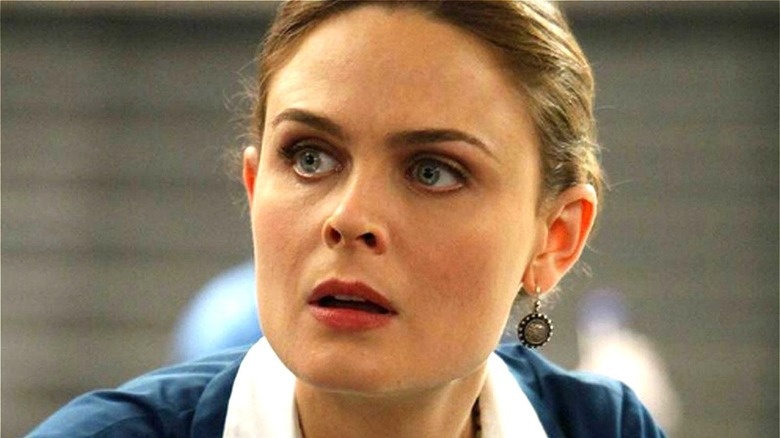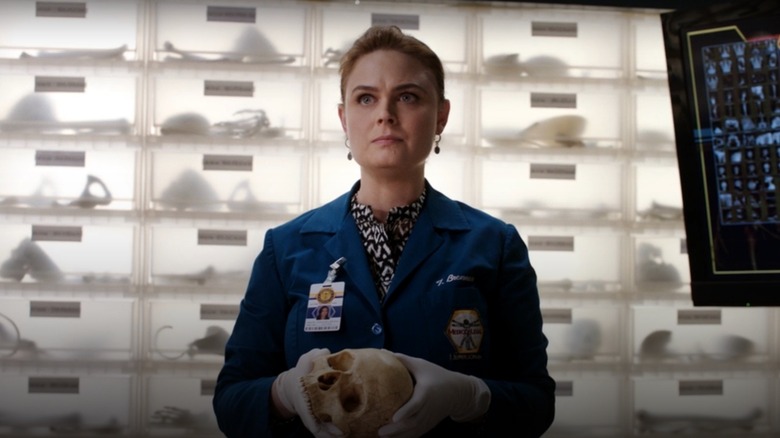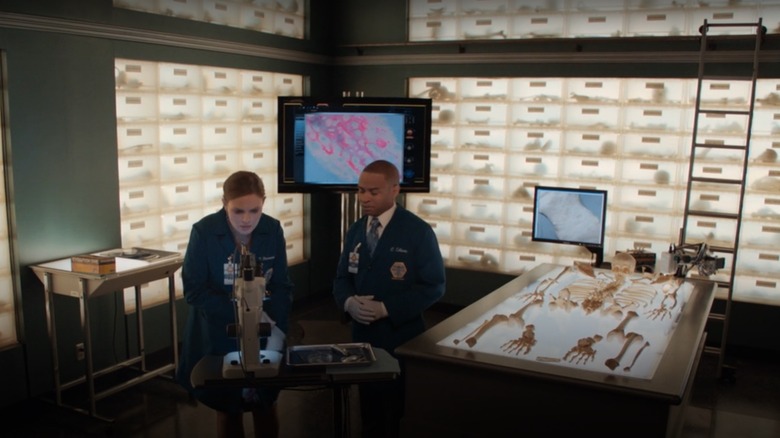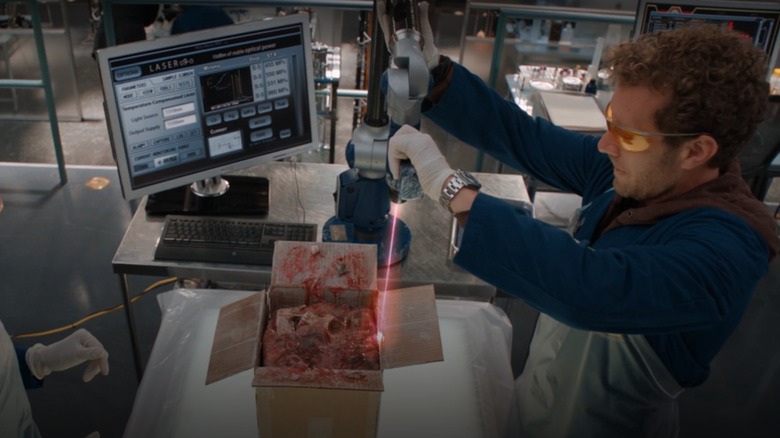How Accurate Was The Science In Bones?
Where some procedurals dig into the science of behavioral profiling, others go headfirst into forensics to catch the weekly killer. "Bones" carved a home for itself among the competition by making a production of forensic anthropology in the unique setting of the Smithsonian Institute. On "Bones," most of the victim's bodies are reduced to something closer to a skeleton than a fleshy human, providing ample fodder for the series' titular bones — the heart of their forensics.
The core of the on-screen scientific team is Dr. Temperance "Bones" Brennan, who's based on a real forensic anthropologist, the producer Kathy Reichs. Also in the lab is forensic artist and tech expert Angela Montenegro (Michaela Conlin) and the entomologist Dr. Jack Hodgins (T.J. Thyne), who make up the "Bones" forensics team with a rotating array of interns.
Typically, Brennan looks at the skeleton to determine age, sex, and cause of death, while Angela recreates the victim's facial features to identify them, and Hodgins studies any unique particulates found on or near the body in the form of insects, mold, or minerals. Their science fuels the investigation as FBI Agent Seeley Booth (David Boreanaz) does the usual talking to suspects and looking for motive thing.
But just how accurate is the science they portray? Well, let's get into it.
What can a skeleton really tell you about sex, age, and ancestry?
With each case on "Bones," the victim's body is usually too disfigured — by decomposition or other methods — to be identified by sight alone, so in most episodes Brennan needs to identify the sex, age, and ancestry of the person to get an idea of who they are. She might look at the pelvis or teeth, for example, but every case is different. However, according to the real life anthropologist Kristina Killgrove, her methods usually aren't up to snuff.
Killgrove has reviewed several seasons worth of Bones episodes on their scientific accuracy and this is one topic that crops up again and again. When writing about Season 9's episode "The Master in the Slop," she wrote, "As usual, sex/age/ancestry was super easy – sure, greater sciatic notch is a quick-and-dirty way to estimate sex. Auricular surface can help in age estimation, but I don't know anyone who can just look at one and tell that narrow an age range." The episode's method to narrow down the victim's race to Caucasian didn't hold up, either. For other episodes, she disparaged their use of brow ridge shape and dental wear to estimate age, sex, and ancestry.
However, in some cases, "Bones" does get it right. In the Season 7 episode "The Memories in the Shallow Grave," Killgrove wrote: "The age/sex estimation is reasonable." That might be as high a praise as they get in that department, though, as she ranked that episode as the third best in terms of scientific accuracy.
Bones usually doesn't get a positive ID on a victim
After identifying the very basics of the victim — age, sex, ancestry — the next step is to look at other details in order to get a positive ID of who the victim actually is. Here's where anthropologist Kristina Killgrove comes across more recurring issues. Those facial reconstruction pictures that Angela often creates? Those simply don't cut it when it comes to positively identifying a victim, Killgrove says.
She gripes that they don't always get confirmation of the victim's ID in an episode, but does acknowledge that they sometimes do it right. She rated the Season 9 episode "The Dude in the Dam" as the best "Bones" episode in terms of scientific accuracy, in part because of how they positively ID the victim. She wrote, "[L]oads of points for using two different genetically-linked traits and dental records to ID the victim."
Yet in another review, she harps on the simplicity of the identification in the episode, saying, "As usual, no osteologist would use just three traits to ID the person. (As a point of reference, I just handed out a packet of 25 pages of data collection sheets to my Human Osteology class today, for use in their final skeletal ID report.)" What audiences see on "Bones" is usually a stretch of the truth — their methods are often too basic, but are rooted in real techniques.
The scientific inaccuracies don't end there
While "Bones" gets some science right, a lot of it is inaccurate or exaggerated for the sake of the story. On the subreddit r/AskAnthropology, users with varying levels of expertise chimed in to express their opinions on the science in "Bones" with a general consensus that while some of the base science is accurate, the series often goes into fantastical territory. Sometimes they just get something done far faster than could happen in real life, but other things are practically impossible. User metatronlevel55 wrote: "I raged so hard on the episode where someone wrote a computer virus on bones so when scanned they would corrupt the computer. Just no."
Of course, real life usually doesn't make for good TV. However, there are some areas where "Bones" is lacking for no story-improving reason. The anthropologist Kristina Killgrove points out that the characters frequently mispronounce words or say terms that are out of date. In what she ranks as the worst "Bones" episode science-wise, Brennan kept saying "Homo sapien" instead of "Homo sapiens" — the scientific name for the human species, a name Brennan should absolutely know.
Every episode of "Bones" may be full of scientific terms and procedures and experiments, but the series is just as much science-fiction as it is mystery.



